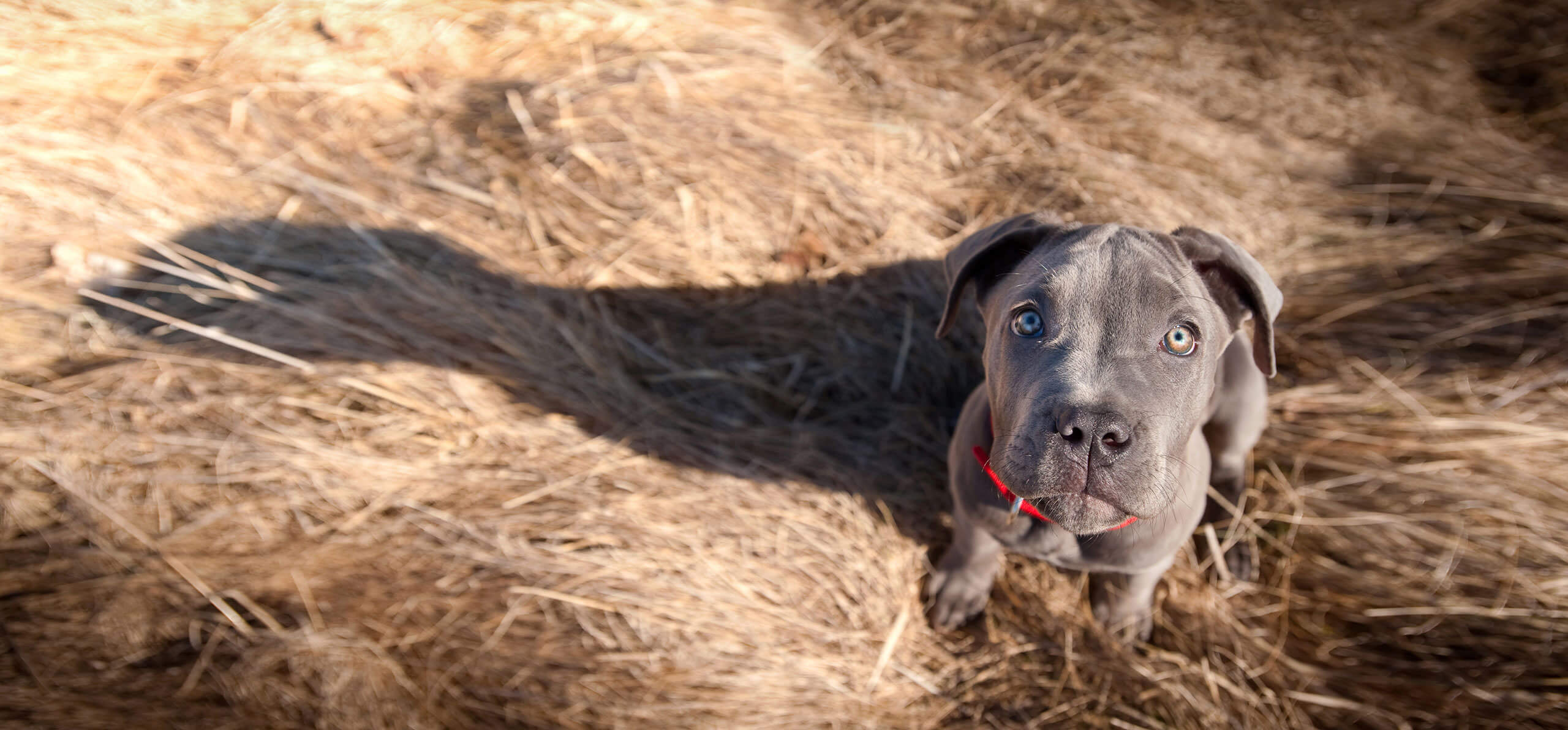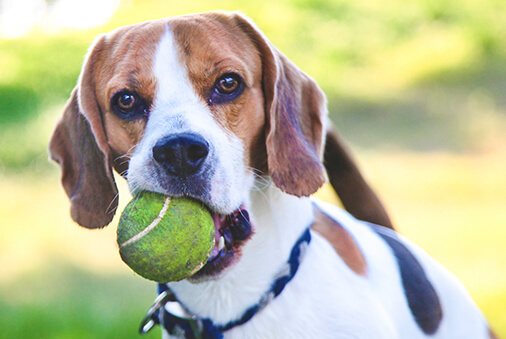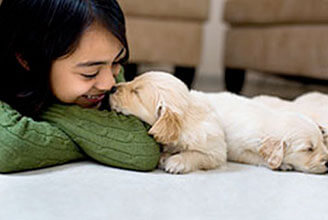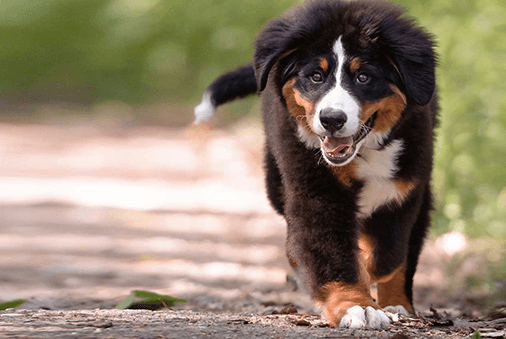8 to 12 Weeks | 3 to 6 Months | 7 to 12 Months
Your Puppy’s Growing!
Feeding at 3 to 6 months old
At this time of rapid growth spurts, your pup can outgrow his collar quickly. Be sure you can slide two to three fingers underneath his collar easily and check it frequently as he grows.
Food allergies can also develop at this age. Watch for changes in your pup’s skin and coat, breathing, or digestion that could indicate he’s sensitive to certain foods or is allergic to grass or airborne irritants.
Discuss natural, grain-free food alternatives with your vet to see if you should slowly switch foods to combat any food-related sensitivities.
Obedience Training for Your Adolescent Pup
It’s time to really focus on house training. With patience and consistency you can actually train your pup in less than a week.
-
Crate, crate, crate. Puppies are unlikely to soil their dens so the longer your pup can stay in his crate, the less accidents he’ll have
-
Tail that dog. Follow your pup closely for signs of squatting, sniffing and turning in circles so you can put him outside as soon as you spot him trying to do his business.
Fast reflexes come in handy because pups can find a spot and urinate in seconds! Be ready to follow your pup everywhere and rush him outside as soon as you see him trying to do his business.
-
It takes a village. The key to housetraining is frequent visits outside so, unless you can clone yourself, get family and friends to help take your pup out as much as possible.
-
Good dog! Even if you didn’t catch your pup in time, always praise him once he’s outside. You want him to associate positive reinforcement with going outside.
-
Accidents happen. Never punish your pet for mishaps and keep a good cleaner handy. Try to remove urine smells completely, not just mask them, or your pup will return to the scene of the crime for a repeat performance.
Sit, stay, listen
Just like a baby’s terrible twos, only sooner, pups may start to act up at this age, which is why training classes are highly recommended.
It’s all about nipping unwanted barking, biting, jumping, leash pulling, and aggression in the bud. Look for a class that emphasizes confidence-building exercises and focuses on socialization skills with other pups and humans.
Socialization is extremely important in the first four months of your pup’s life so be sure to gently expose him to lots of different people, pets and situations so he learns good manners and coping skills.
Ongoing Health Care for Your Puppy
In addition to regularly inspecting your pup’s ears for signs of odor or discharge, his next set of vet appointments should cover the following:
- First Rabies vaccine
- Flea and tick control
- DHHP combo vaccine booster (16 weeks old)
- Neutering or spaying
Neutering males can reduce several unwanted behaviors such as: aggression, urine-marking and mounting. It can also guard against testicular cancer and prostrate problems.
Spaying females decreases the chance of unwanted litters and lets you skip the hassles of dealing with a pup in heat. Spaying before your female goes into her first heat (as early as 6 months old) can help lower ovarian and breast cancer risks as well.
Cleaning those canines
Your vet will examine your pup’s teeth annually. Even though dogs don’t get cavities like humans, home dental care is extremely important to keep plaque and bacteria at bay. As any vet will tell you, it’s never too early to introduce your pet to a toothbrush.
Brushing can be tricky but you can work up to it with patience and practice using these tips.
-
Say ahhh. Put your hand at the top of your pup’s muzzle, squeeze gently and push his lips to one side toward his back teeth, then pull his head back gently to open his mouth.
-
Rub teeth with soft gauze. Wrap gauze around your finger to “brush” against your pup’s canines. Start with just a few teeth until your pooch is comfortable with the process.
-
Invest in a pet toothbrush. Yes, there are toothbrushes and pastes specifically designed for our furry companions, available through most pet retailers. Don’t use human toothpastes as these aren’t meant to be swallowed.
-
Gums rule. As with people, the sweet spot to scrub is where the teeth meet the gum line. Spend about 30 seconds on each side of your pup’s mouth, at least a few times per week.
Learn more about the next important stage in your puppy's life.







